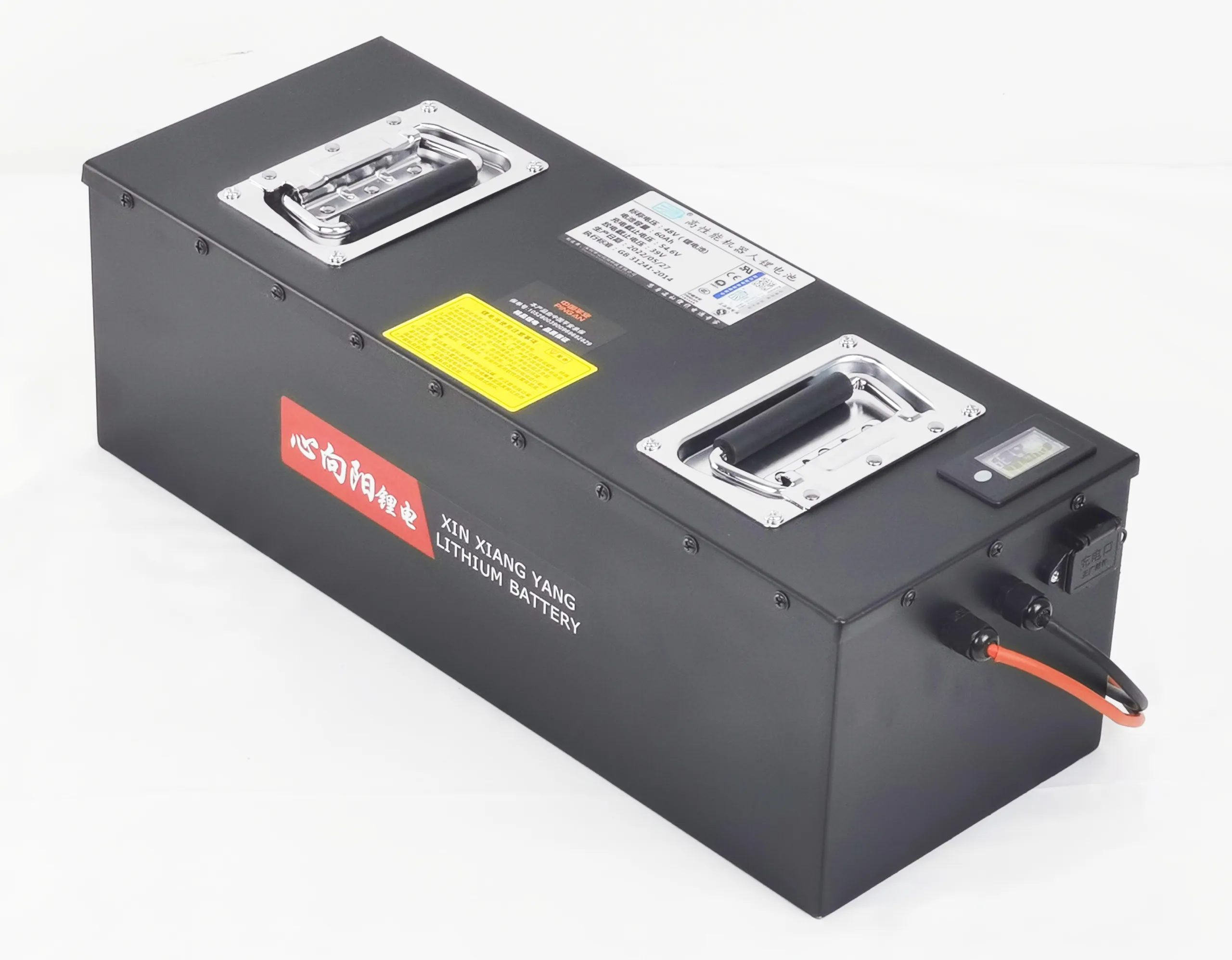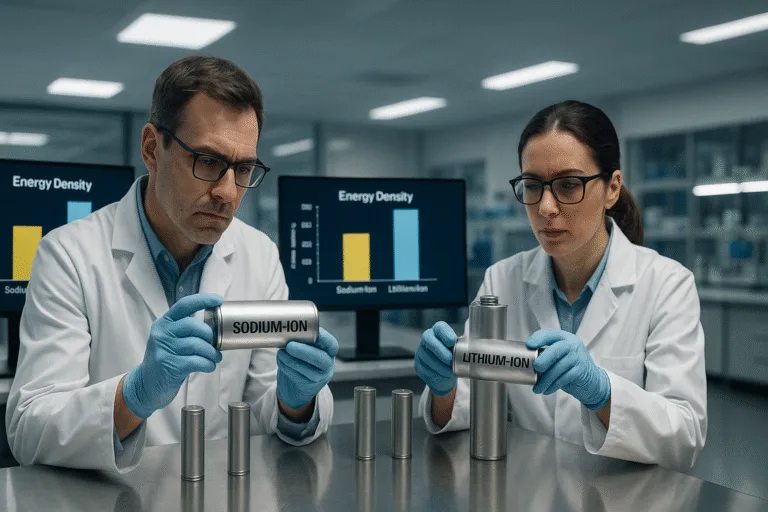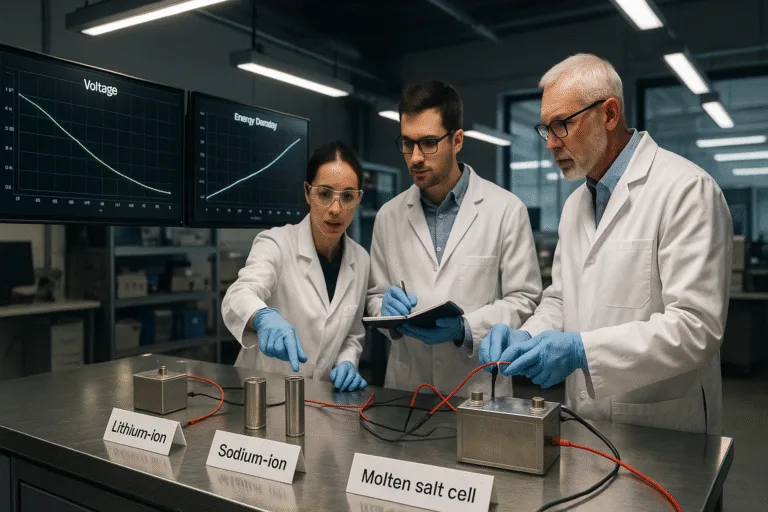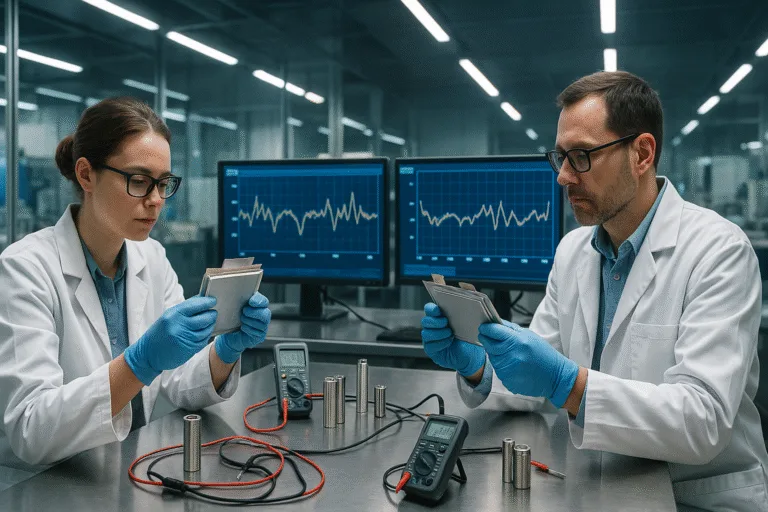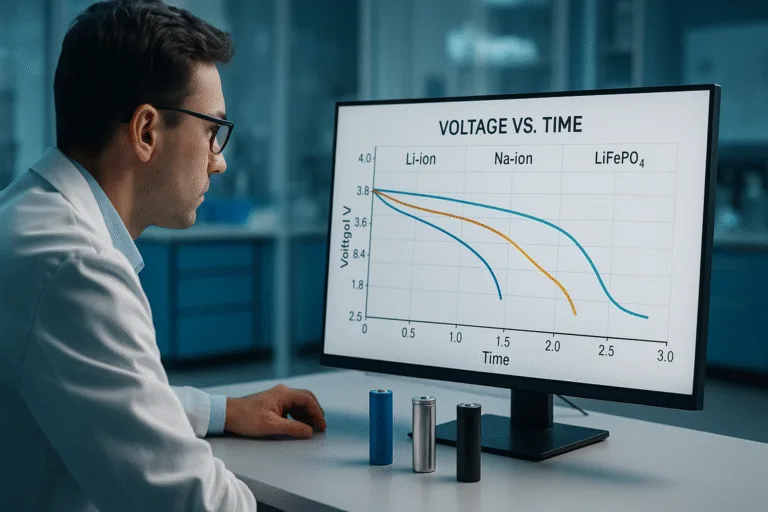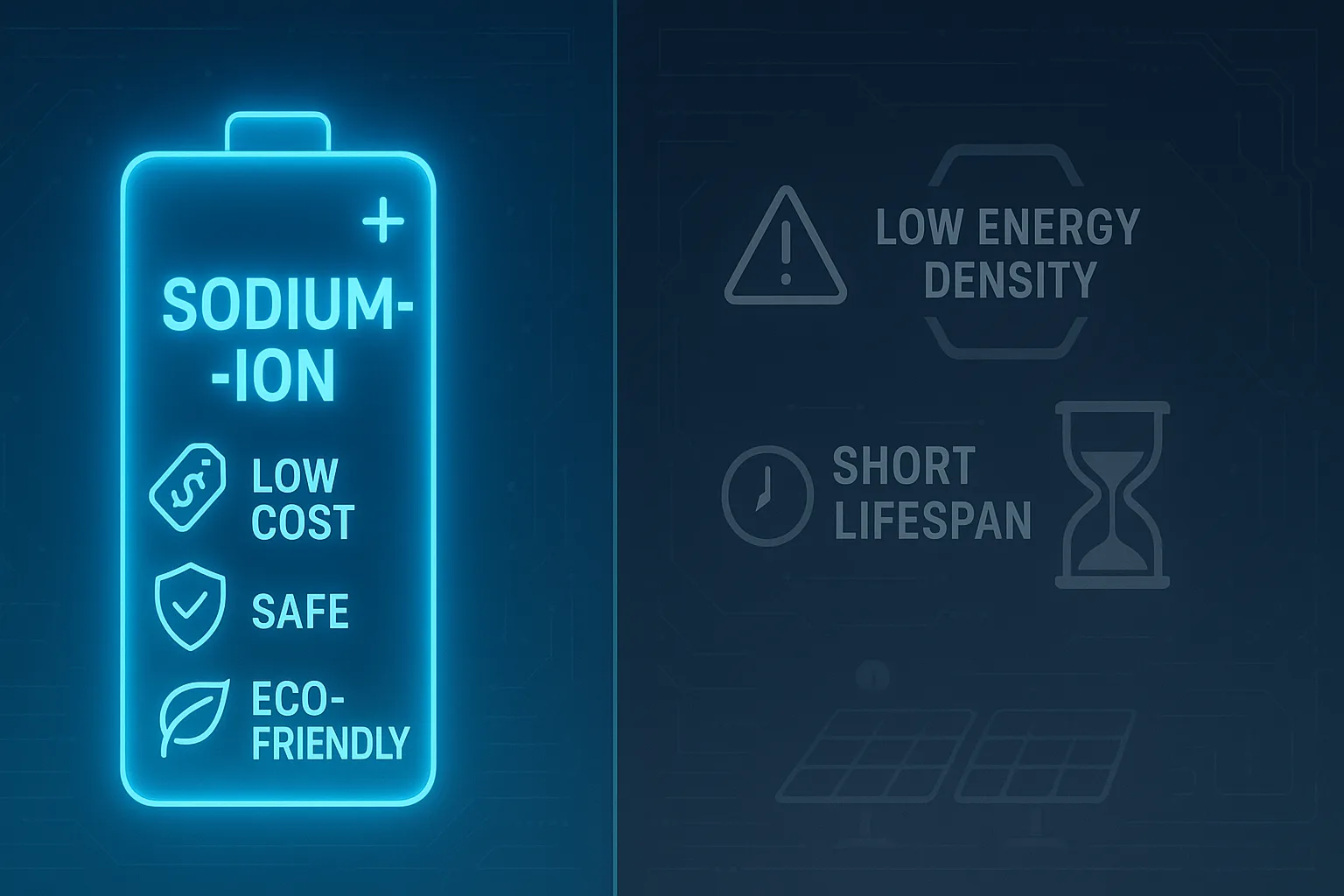
Are you intrigued by sodium-ion batteries but unsure if they’re right for your needs? Many people share this uncertainty. Let’s break down their benefits and downsides clearly.
Sodium-ion batteries offer advantages like abundant and low-cost materials, enhanced safety, and environmental friendliness. However, they have disadvantages such as lower energy density, limited lifespan, and less market maturity compared to lithium-ion batteries.
I’ve spent considerable time exploring battery tech, and clearly understanding both strengths and weaknesses helps immensely in choosing the right option.
What Is the Biggest Advantage of Using Sodium-Ion Batteries?
Curious about the standout benefit of sodium-ion batteries?
The biggest advantage of sodium-ion batteries is their affordability and abundant raw materials1. Sodium is widely available globally, making sodium-ion technology more sustainable and less resource-intensive than lithium-ion.
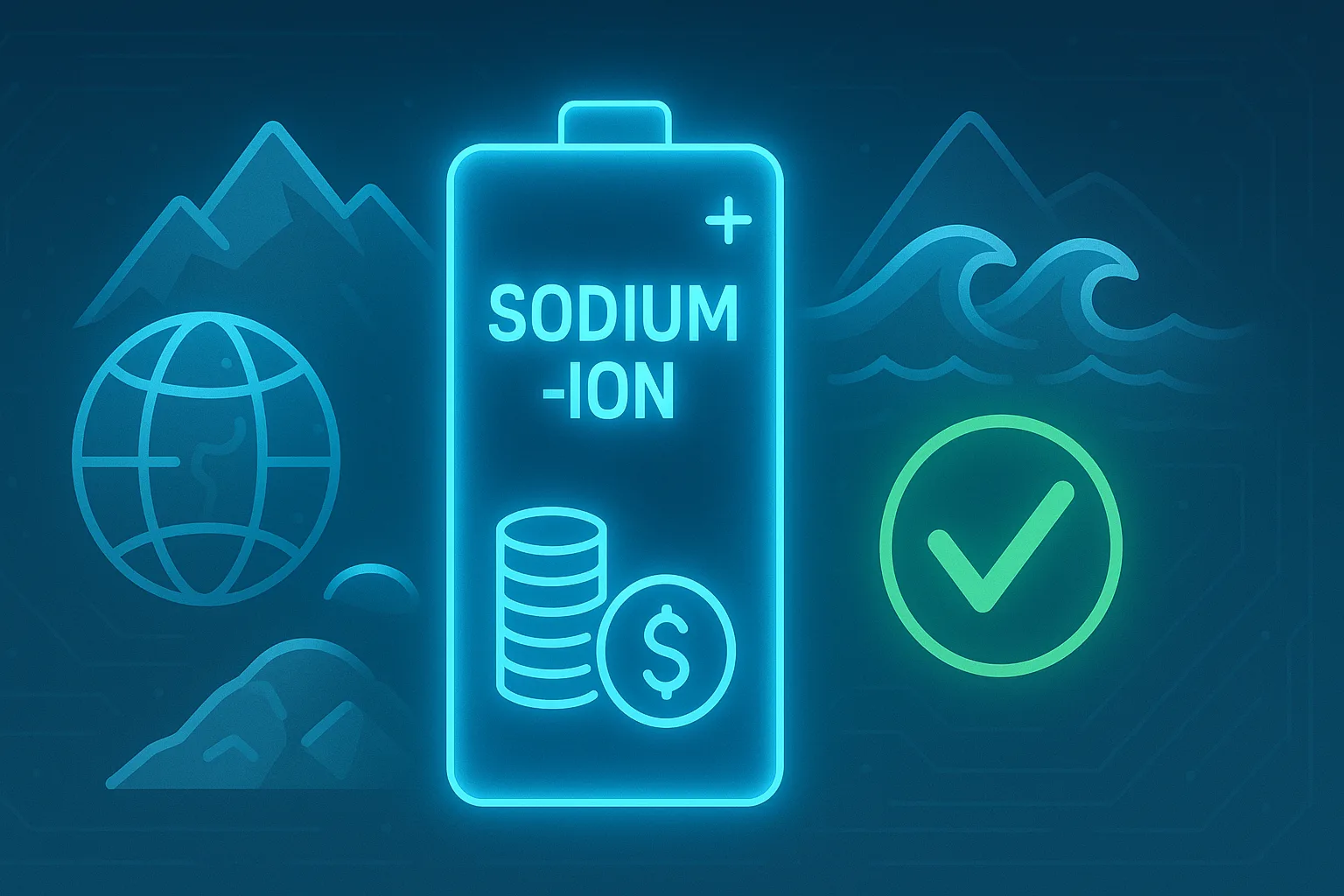
Key Advantages of Sodium-Ion Batteries
Let’s examine the key benefits closely:
- Cost-Effectiveness2: Sodium is inexpensive and abundant, greatly reducing battery production costs compared to lithium-based alternatives.
- Safety and Stability: They are inherently safer, less prone to overheating or combustion.
- Environmental Sustainability3: Easier to source ethically, with better recyclability and lower environmental impacts.
| Advantage | Why It Matters |
|---|---|
| Low Material Cost | Reduces overall battery expenses |
| Improved Safety | Less risk of fires or thermal runaway |
| Environmentally Friendly | Sustainable sourcing and easier recycling |
What Are the Main Drawbacks of Sodium-Ion Batteries?
Thinking of sodium-ion batteries? You should consider their primary limitations carefully.
The main drawbacks of sodium-ion batteries include lower energy density, shorter cycle life compared to lithium-ion, less established technology, and limited current market availability.
Significant Disadvantages Explained
Let’s explore these limitations clearly:
- Lower Energy Density4: Less energy per unit size or weight, requiring larger, heavier battery packs.
- Shorter Cycle Life5: More frequent replacements due to fewer charge-discharge cycles.
- Technological Maturity6: Limited real-world use, fewer tested applications, and evolving manufacturing processes.
| Disadvantage | Impact | Potential Solutions |
|---|---|---|
| Lower Energy Density | Larger installations or heavier setups | Continued R&D for efficiency |
| Shorter Lifespan | Frequent replacements, higher maintenance | Advanced battery management |
| Limited Availability | Challenges in procurement and support | Increased industry adoption |
How Do Sodium-Ion Batteries Degrade Over Time?
Concerned about how sodium-ion batteries might degrade with ongoing use?
Sodium-ion batteries7 degrade over time primarily through gradual capacity loss from repeated charge-discharge cycles, electrolyte breakdown, and structural changes within battery cells, often accelerated by high temperatures.
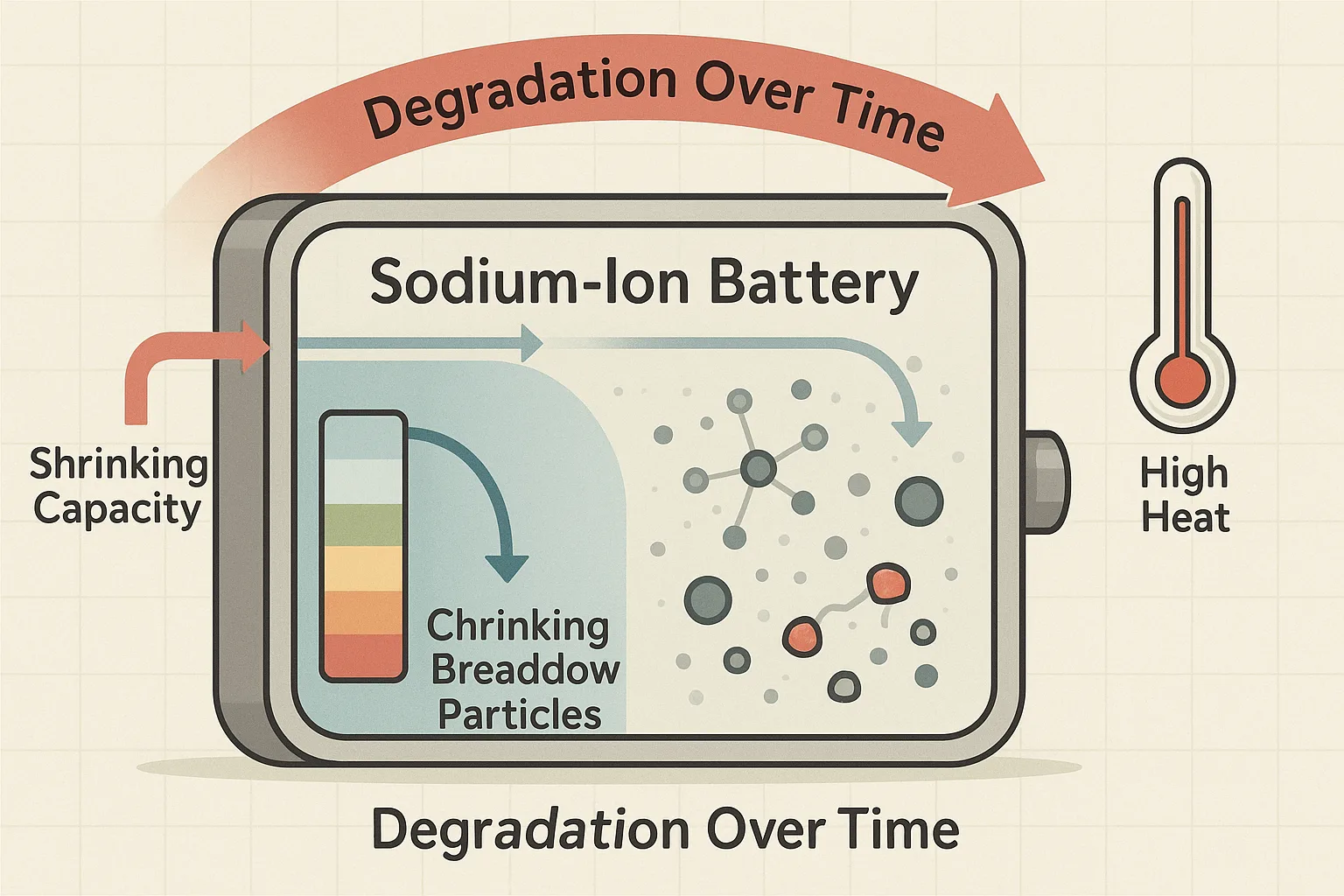
Understanding Sodium-Ion Battery Degradation
Several factors contribute significantly to sodium-ion battery degradation:
- Cycle Degradation: Each charging cycle slightly reduces battery capacity.
- Electrolyte Aging8: Chemical breakdown within the battery causes loss of performance.
- Temperature Extremes: High heat speeds degradation significantly.
| Degradation Factor | Effect on Battery | Recommended Mitigation |
|---|---|---|
| Charge-Discharge Cycles9 | Gradual reduction in capacity | Manage charge cycles carefully |
| Electrolyte Aging | Reduces battery efficiency | Use optimized electrolyte blends |
| High Temperature | Speeds up internal degradation | Effective cooling solutions |
Proper battery management greatly reduces the impact of these degradation processes.
What Limitations Should You Consider When Using Sodium-Ion Batteries?
Planning to use sodium-ion batteries? Knowing key limitations can help you prepare.
Important limitations include lower energy density requiring more space, shorter battery lifespan10 meaning frequent replacements, limited availability11, and developing infrastructure compared to lithium-ion alternatives.
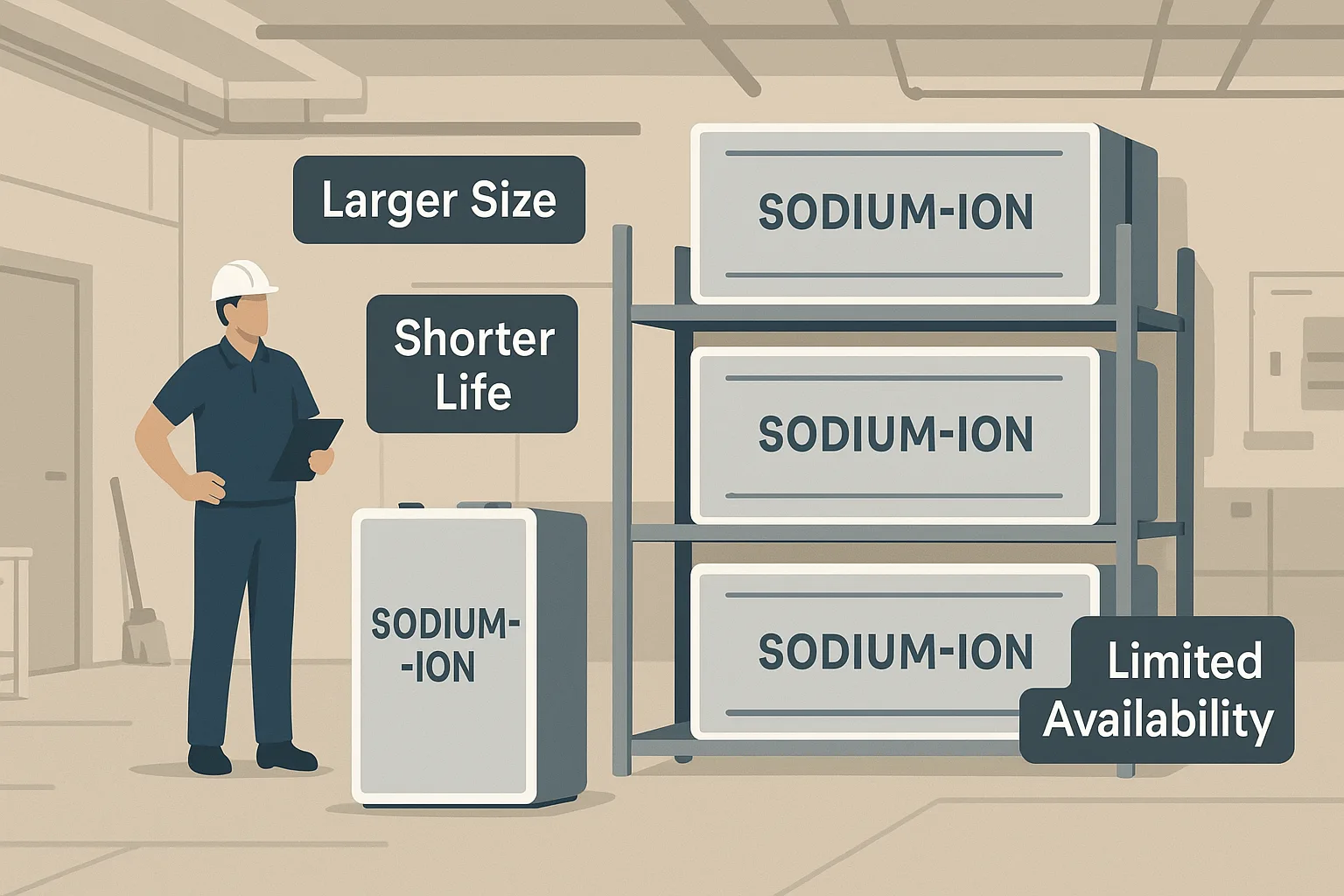
Practical Considerations for Sodium-Ion Batteries
Consider these practical limitations before adopting sodium-ion batteries:
Space Requirements
Lower energy density means you’ll need physically larger batteries to achieve comparable energy storage.
Lifespan and Maintenance
Shorter cycle life requires more frequent replacements or extensive battery management.
Market Availability and Support
Limited production means finding replacements or support could be challenging initially.
| Limitation | Practical Impact | Solutions |
|---|---|---|
| Lower Energy Density | Increased size and weight | Ensure sufficient installation space |
| Shorter Lifespan | Higher long-term maintenance costs | Regular maintenance and battery care |
| Limited Availability | Difficult procurement initially | Plan early procurement and backups |
Recognizing these constraints ensures a smoother implementation process.
Conclusion
Sodium-ion batteries offer significant benefits like affordability and environmental sustainability but also have clear limitations in energy density, lifespan, and market availability. Carefully evaluating these points helps you select the most appropriate battery solution.
-
Explore how sodium-ion batteries’ affordability and abundant materials make them a sustainable choice for energy storage. ↩
-
Learn about the cost advantages of sodium-ion batteries and how they can impact the future of energy storage. ↩
-
Discover the environmental benefits of sodium-ion batteries and their role in promoting sustainable energy solutions. ↩
-
Understanding the implications of lower energy density can help you assess the practicality of sodium-ion batteries for your needs. ↩
-
Exploring the effects of shorter cycle life will provide insights into the longevity and reliability of sodium-ion batteries. ↩
-
Learning about the technological maturity of sodium-ion batteries can inform you about their readiness for widespread use and potential future developments. ↩
-
Explore this link to understand the fundamentals of sodium-ion batteries and their advantages over traditional lithium-ion batteries. ↩
-
Learn about electrolyte aging to grasp its impact on battery life and performance, crucial for optimizing battery technology. ↩
-
Discover the relationship between charge-discharge cycles and battery longevity, essential for effective battery management. ↩
-
Exploring the effects of a shorter battery lifespan will prepare you for maintenance and replacement needs, ensuring reliability. ↩
-
Learning about the challenges of limited availability can help you strategize procurement and support for sodium-ion batteries. ↩

